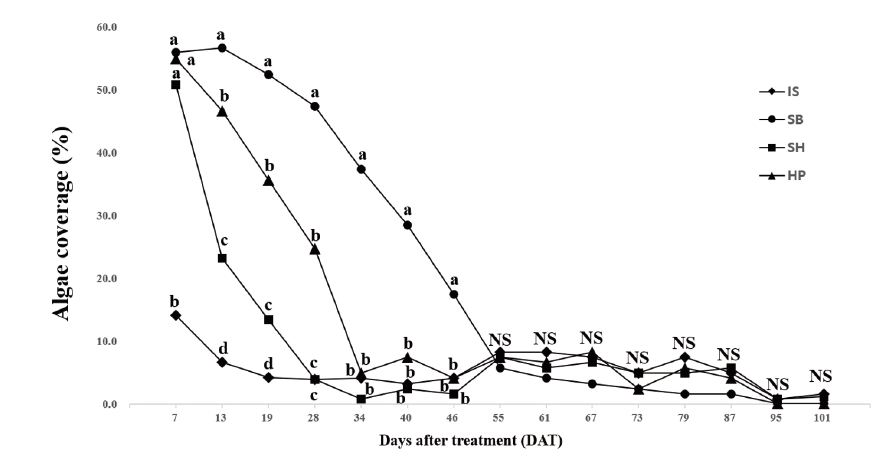Abstract
Algae which can induce unfavorable conditions for growing healthy and dense turf resulted from pest infestations or physiological stress is problematic for turf area. Although the previous researches have been reported about algae control by chemical materials, there are little research results available regarding the algae controls by chemical applications during turfgrass establishment. Research objective is to compare chemical materials to control algae during establishment of Kentucky bluegrass (Poa pratensis) cultivar ‘Midnight’. Chemical materials of iron sulfate, sodium bicarbonate, sodium hypochlorite, and hydrogen peroxide were evaluated with the low and high rate, respectively. If the immediate algae control is required, iron sulfate and sodium hypochlorite can control algae coverage at 6.7 and 23.3% during Kentucky bluegrass establishment within 19 days. However, sodium hypochlorite had negative effects on turfgrass quality, turfgrass coverage, and clipping dry weight. Iron sulfate had the greatest algae control, turf coverage and turf quality during the establishment of Kentucky bluegrass among all chemical materials based on the study.
Figures & Tables

Fig. 1. Mean algae coverage (%) per unit surface of ‘Midnight’ Poa pratensis by the chemical material main effect. Each mean was calculated from six observations at four chemical materials (main effect averaged over two application rates with three replications). Means with the same letter within each DAT (days after treatment) or denoted (NS) are not significantly different according to Fisher’s LSD (P=0.05). IS: Iron sulfate (FeSO); SB: Sodium bicarbonate (NaHCO); SH: Sodium hypochlorite (NaOCl); HP: Hydrogen peroxide (HO).


